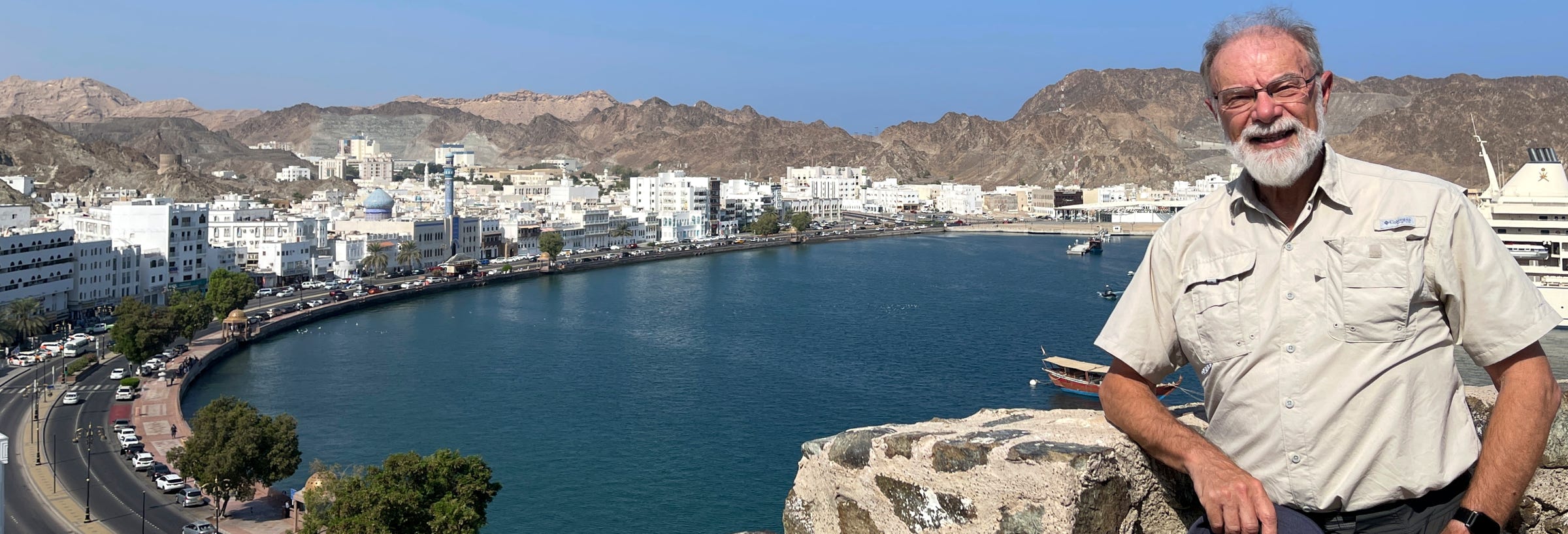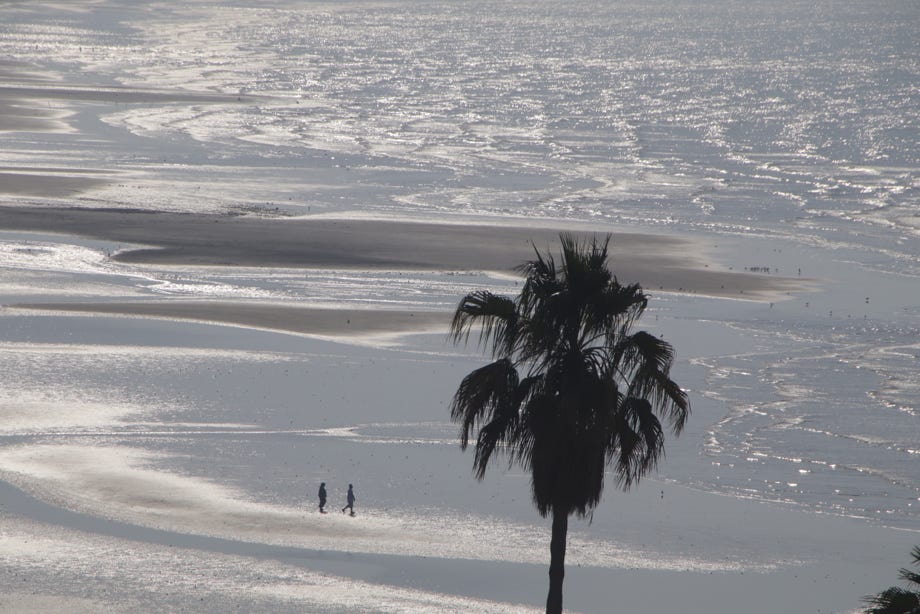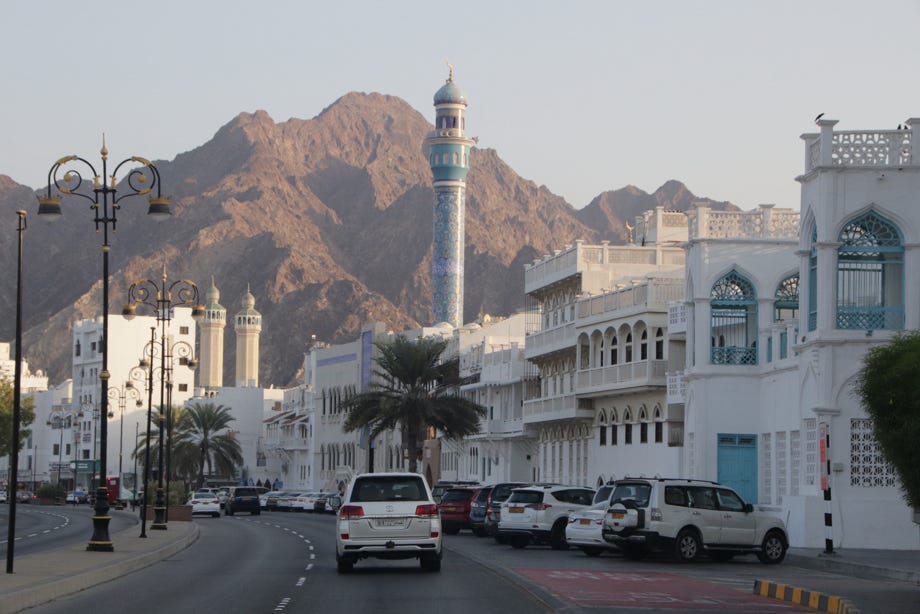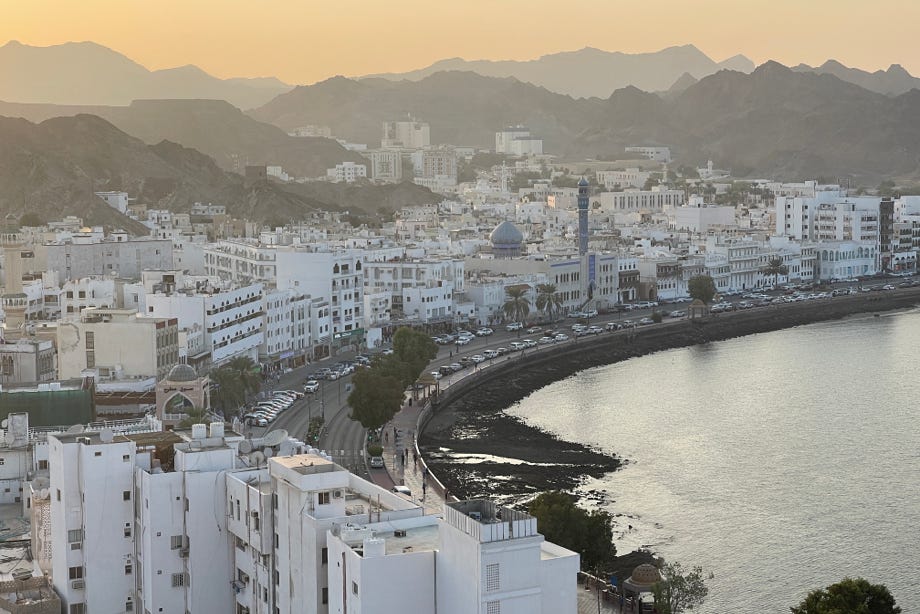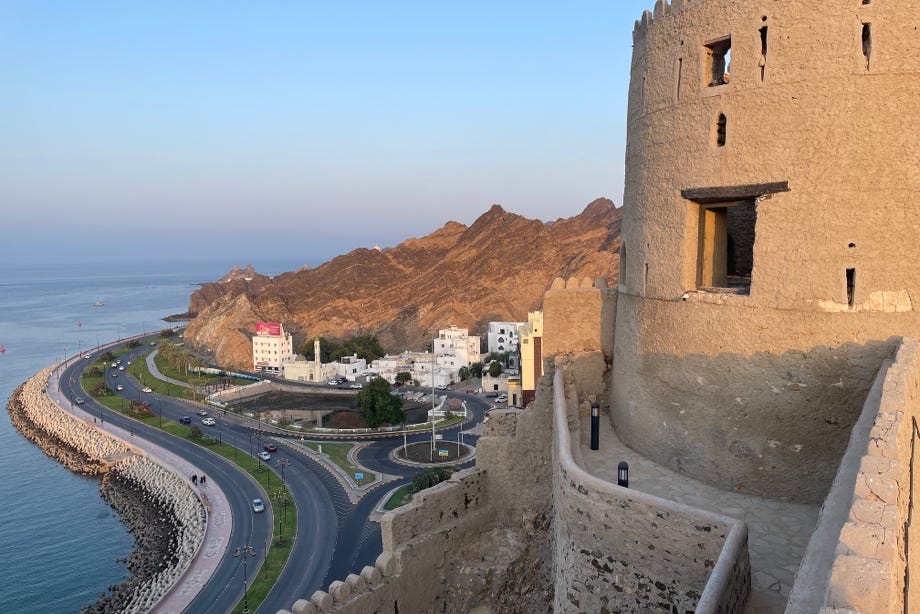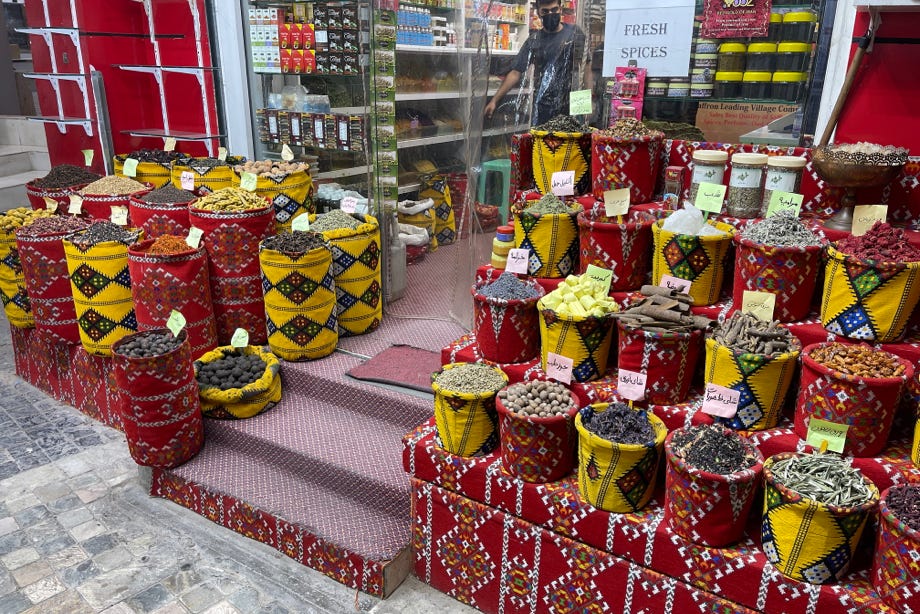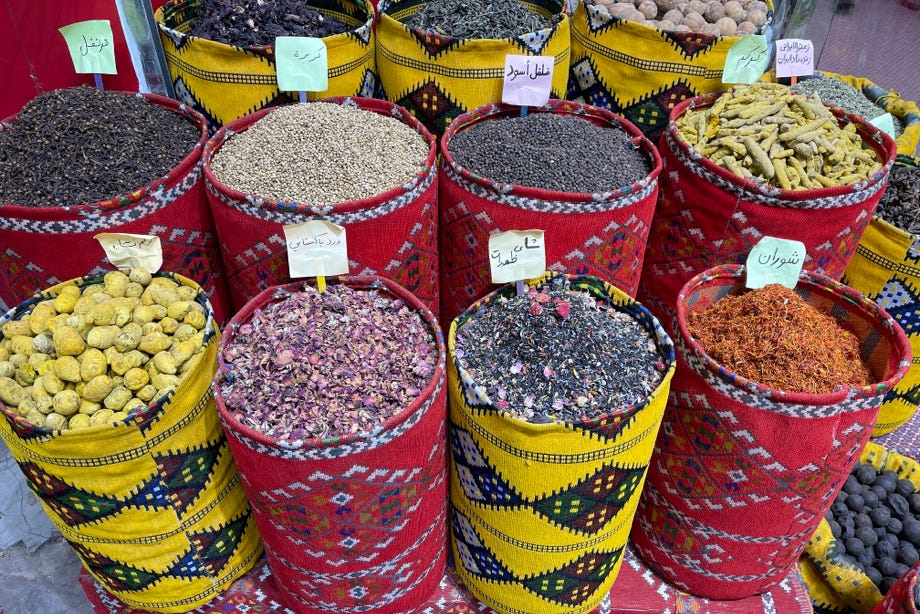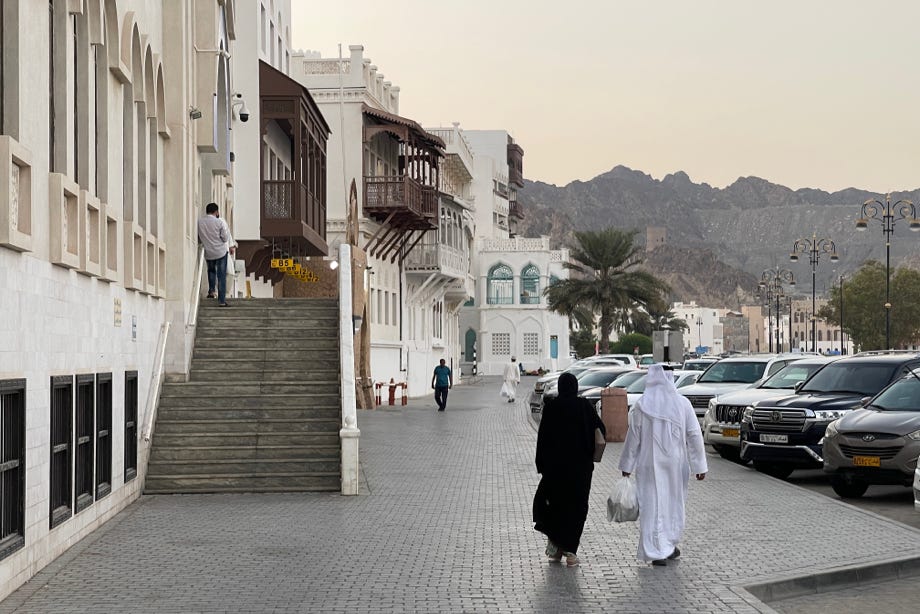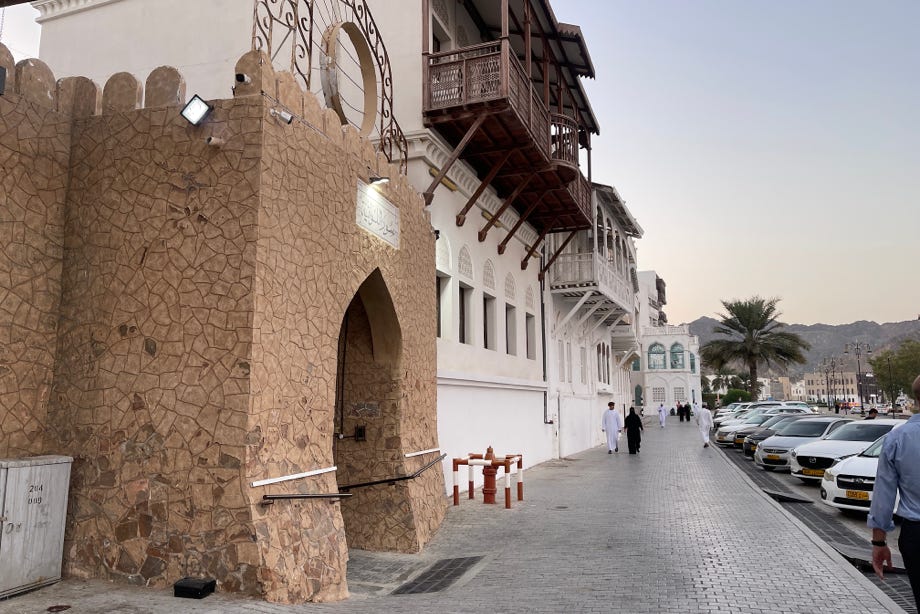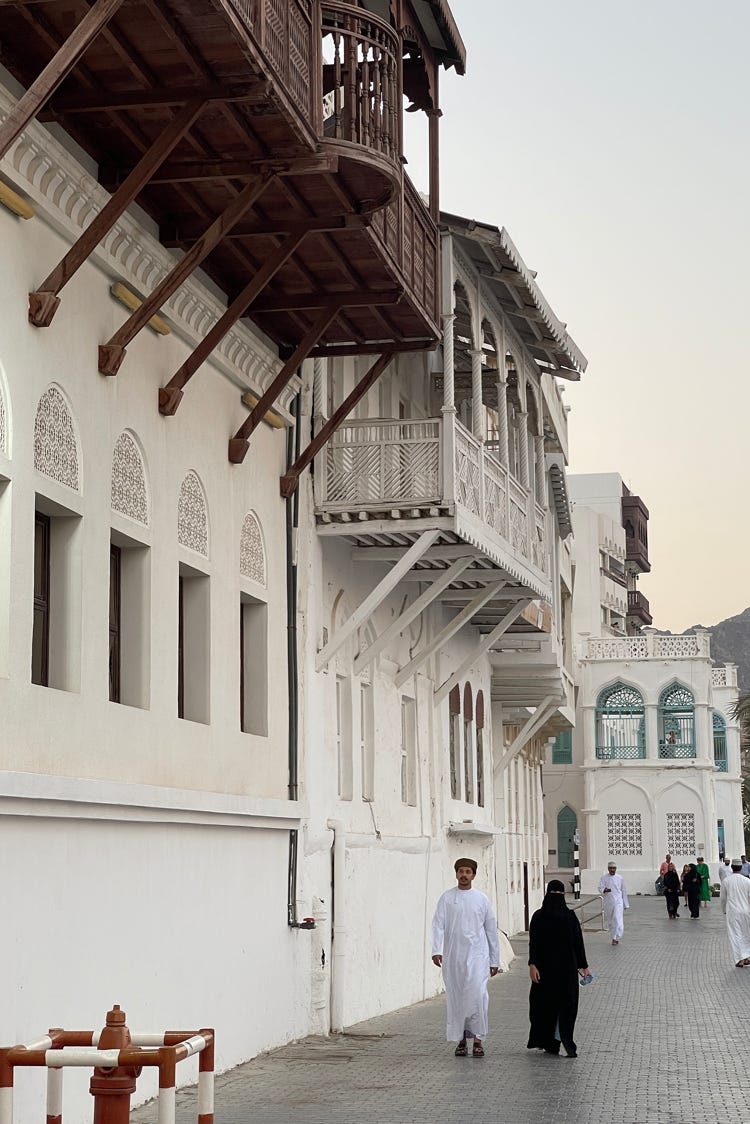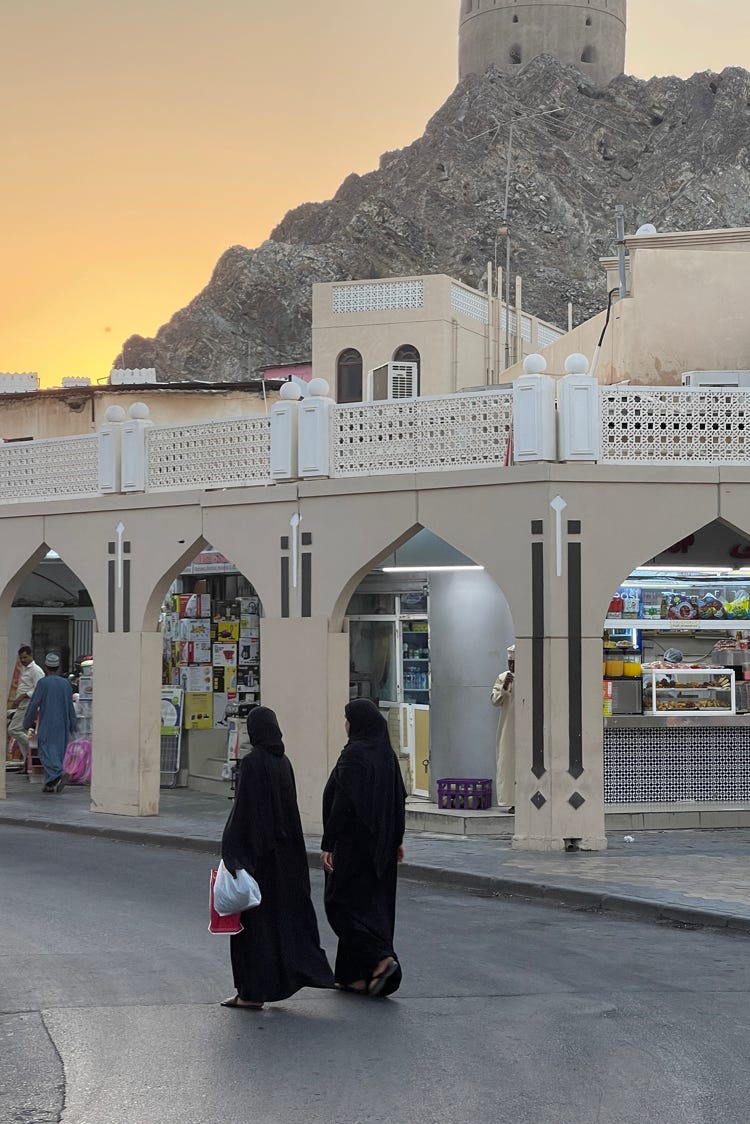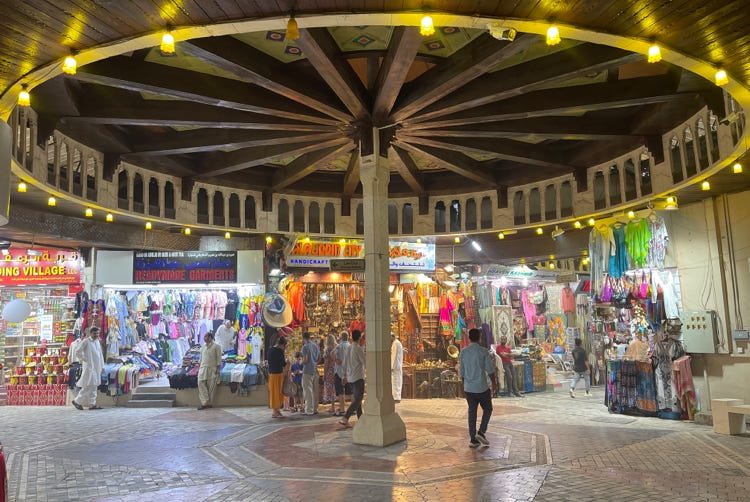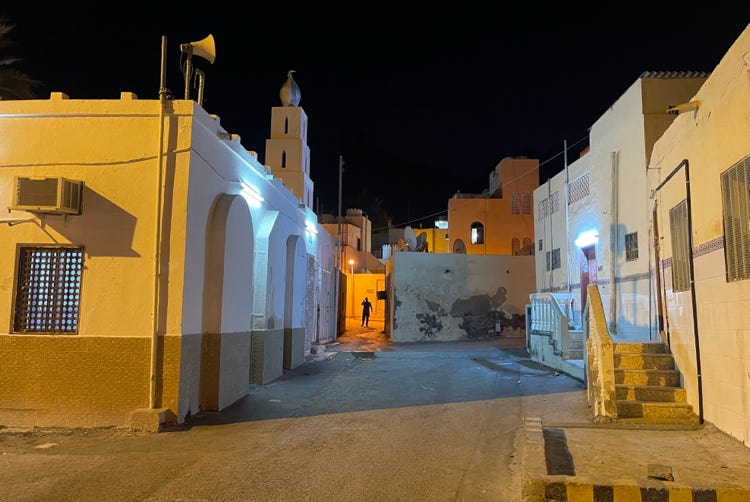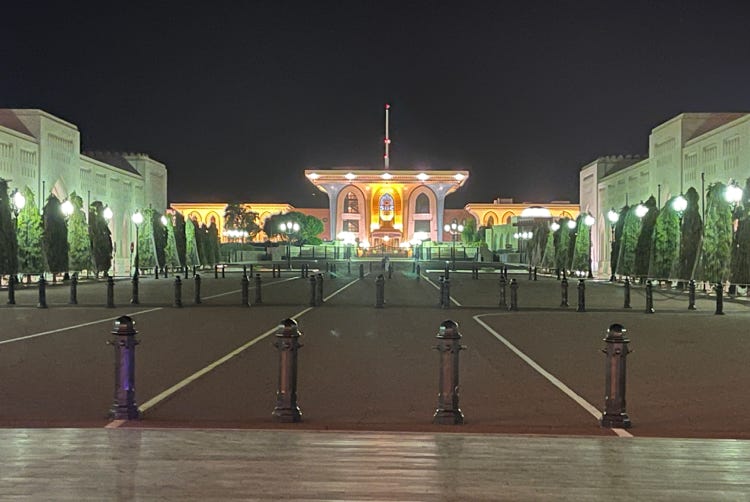When I woke this morning and looked out, I immediately appreciated the special place that Muscat is. The view from my window was towards the west along Qurum Beach which stretched several kilometres away in the clear morning light.
I slept in a little this morning, probably a reasonable reaction to the previous day’s long trip. After a mind-blowingly great breakfast of fresh, flavoursome food from the Middle East, India and Europe, the focus of the day was visiting the school, having a tour of the campus and holding preliminary meetings.
In the late afternoon and early evening, Terry was keen to introduce me to Muscat. It was immediately apparent that Muscat is markedly different to other cities in the Gulf region. With a history of at least 1,800 years, it has retained its intimacy in a way that has eluded other recently expanding cities such as Dubai, Doha, Bahrain, Kuwait City and Abu Dhabi, not to mention Riyadh and Jeddah in nearby Saudi Arabia, all of which are now dominated by ‘glass-and-concrete’ high-rise development. Perhaps only Sana’a in Yemen retains a more traditional atmosphere than Oman among the region’s capital cities.
By 1500 Muscat had emerged as a major trading port, and its influence grew in the 1700s as Oman built the region’s largest empire at the time, establishing trading posts, towns and territory across southern Arabia and southwards along the coast of East Africa as far as Zanzibar.
Today Muscat is a 50 kilometre long stretch of urbanisation along the southern shoreline of the Gulf of Oman, sandwiched between the coastline and a range of steep, rugged hills that form its spectacular backdrop. The historic heart of Muscat lies towards the eastern end of the urban area in two port enclaves, Mutrah and Old Muscat.
The historic port area known as Mutrah was our destination for the evening, and I could not have hoped for a better introduction to the city. Mutrah is focussed on the Corniche, a gently curving roadway that lines Murtrah’s harbour. We entered Mutrah driving along the Corniche from west to east, admiring the ensemble of multi-storeyed lattice-fronted buildings with overhanding balconies, interspersed by several ornate mosques. In the harbour, to our left was a huge vessel which looked like a medium-sized ocean liner; this was the Sultan’s yacht, backed by several other support vessels that were only a little smaller.
We parked the car in an area of old housing and walked along several backstreets before entering the maze of covered laneways that comprise Mutrah’s souq (or traditional markets). It was already sunset by now, and so most of the day’s activities had ceased. Nonetheless it was still possible to sense the colour and vibrancy of the markets as well as, from the time to time, the aromas of the spices and frankincense that were on sale.
We emerged from the souq on to the Corniche and immediately joined in the evening throngs of local people who were walking along the edge of the harbour enjoying the evening breeze. The gentle, relaxed atmosphere was intoxicating, as were the close views I was able to get of the historic buildings that line Mutrah’s Corniche.
Of particular interest was one building that definitely does not welcome visitors. Almost adjoining the impressive Masjid Al Rasool Al A’dham (Great Prophet Mosque) is a small, brown castle-like entry known as The Great Gate of Al-Lawatiyyah Wall. The gate leads into a 450 year old residential compound of Lawatis, a tribe of Ismaili Shi-ite traders. We didn’t try to enter as the half-dozing ‘guard’ sitting on a folding chair inside the gate with arms folded and head bowed was deemed to be sufficient deterrence.
We interrupted our walk along the Corniche with a stop at ‘Juice World’. Unusually, I resisted the always-excellent mango juice that is a staple in Oman and chose instead the date juice. It was the first time I had drunk a large, tall glass of date juice (or indeed, date juice in any quantity), and I didn’t regret the selection. I’ve made a mental note of the location of ‘Juice World’ in case I ever get the chance to re-visit Mutrah.
Re-energised by my huge glass of date juice, we proceeded to the building that dominates Mutrah’s skyline, the old Mutrah Fort. In many parts of Oman (including Mutrah), every hilltop seems to have a watchtower or fort on its summit. Mutra Fort, however, was constructed on a far larger scale. Built by the Portuguese during their occupation in 1580s, the Fort is topped with several towers and platforms, and offers fabulous, elevated views in almost every direction – across Mutrah Harbour, along the Corniche, over the town of Mutrah, and along the road that leads eastwards towards Old Muscat. Without doubt, the views from Mutrah Fort are among the most memorable in all Oman.
By the time we descended from Mutrah Fort, the sun had set, but our introduction to Muscat finished. Terry was keen to show me Old Muscat, which was just a short drive away on a different harbour and surrounded by a different circle of steep, rocky hills.
We took the back road between Mutrah and Old Muscat, which was the traditional trading route and, until a few years ago when a new road was built on reclaimed land along the shoreline, the only access road to Old Muscat. As we were about to descend the steep road into Old Muscat, this approach presented us with the traditional view that ancient traders received when they reached Oman’s capital city – then (as now) a surprisingly tiny, seemingly isolated township that faces the sea rather than the land.
It was quite dark by the time we reached Old Muscat despite its short distance from Mutrah. Nonetheless, many of the forts guarding the harbour’s entry to the sea were floodlit, as was the centrepiece of Old Muscat, the Sultan’s Palace (known as the Al Alam Palace) and the vast pedestrianised colonnade that forms the formal approach road to its entrance. I managed to get some night time photos, but I felt this was just a taster – I needed to return and see Old Muscat in daylight one day.
